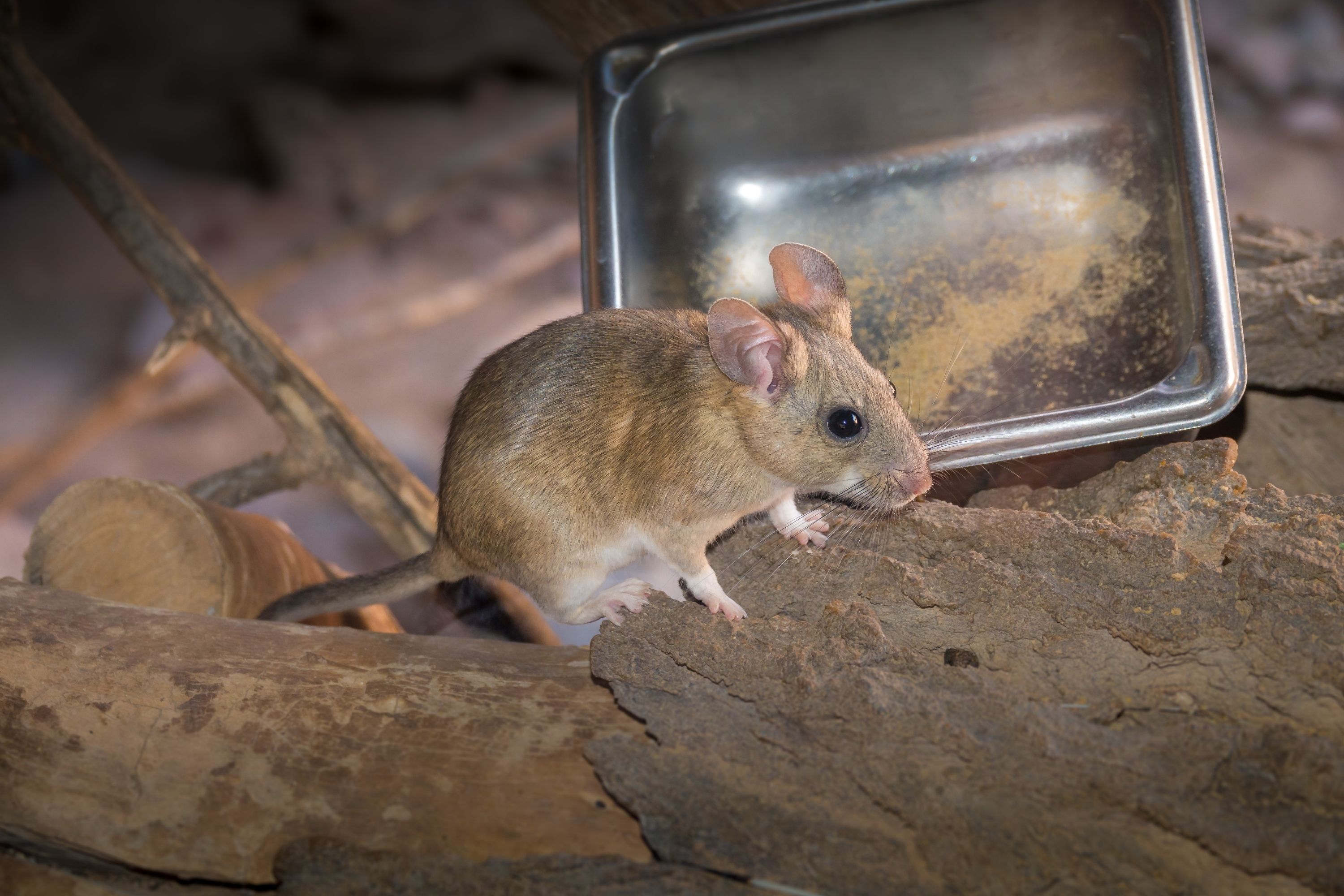White-throated woodrat
(Neotoma albigula)

Description
The white-throated woodrat (Neotoma albigula) is a species of rodent in the family Cricetidae. It is found from central Mexico north to Utah and Colorado in the United States. It is primarily a western species in the United States, extending from central Texas west to southeastern California. Populations east of the Rio Grande in New Mexico and Trans-Pecos Texas, previously considered to be variants of the white-throated woodrat, have since 1988 been assigned to the white-toothed woodrat (Neotoma leucodon). The animal lives mostly in the Upper and Lower Sonoran life zones, occurring from pinyon-juniper woodland in higher country to desert habitats at lower elevations. As with other species of woodrats, the white-throated woodrat constructs middens of a variety of materials such as sticks, cactus parts, and miscellaneous debris. An above-ground chamber within the midden contains a nest lined with grasses and kept free of feces. In non-rocky areas, the den usually is several feet in diameter and most commonly built around the base of a shrub that gives additional cover. In areas of rocky outcrops, crevices often are utilized, with sticks and other materials preventing free access to the nesting chamber. Molecular data suggest that this species separated from other species of the Neotoma floridana group (Neotoma floridana, Neotoma micropus, Neotoma leucodon) about 155,000 years ago during the Illinoian Stage of the Pleistocene. This is consistent with the oldest known fossils from Slaton, Texas. This rodent is a common fossil in Southwestern cave faunas, with over 20 fossil localities of Pleistocene age known from New Mexico alone. The white-throated woodrat occupies a variety of plant communities from sea level to 9,200 feet (2,800 m)but is most common in Sonoran and Chihuahuan desert grassland and desert shrub habitats.The white-throated woodrat is generally associated with creosotebush, mesquite, cacti (particularly prickly-pear and cholla (Cylindropuntia spp.)), catclaw acacia, and paloverde. These plants provide cover and succulent plant food (>50% water by weight) (see section "Food habits"), the 2 most critical habitat requirements for white-throated woodrat. White-throated woodrats prefer habitat with low tree canopy cover,high shrub and rock cover,and coarse woody debris.When available, natural and human constructed riparian habitat may be used by white-throated woodrats.
Taxonomic tree:







